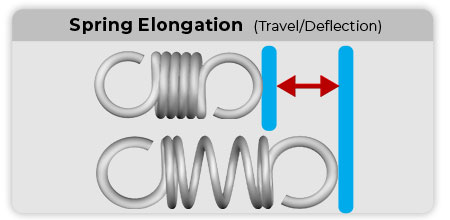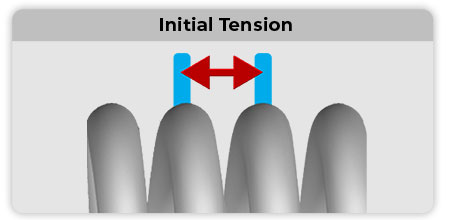Spring Elongation Calculator
Definition: Spring elongation is the distance traveled of a compression spring from its free or pre-loaded length to its extended (elongated) length.
Elongation is exactly what extension springs are made for. These helically wound coil springs with touching adjacent coils have hooks on the ends which allow for the spring to latch onto mounts that are supposed to be pulled apart. The function of an extension spring is to bring those objects back to their original position once the load pulling them has been released.
Attention! Input results shown will be +/- 10% from middle value. Hint: The closer your min and max inputs are, the more accurate your results will be!
Attention! Input results shown will be +/- 10% from middle value. Hint: The closer your min and max inputs are, the more accurate your results will be!
Attention! Input results shown will be +/- 10% from middle value. Hint: The closer your min and max inputs are, the more accurate your results will be!
Spring Elongation
Our extension spring elongation calculator, Spring Creator is an advanced system made up of several extension spring calculation formulas which help you generate an accurate extension spring design. The elongation of your spring is known as travel or deflection. The way to measure the elongation of your extension spring, is to subtract the length inside hooks (unloaded) from the extended length.
Elongation (Travel) = Extended Length – Length Inside Hooks

To calculate your spring’s working loads you will first need to find out the initial tension of your extension spring design. Initial tension is the energy already gathered between your spring’s coils which keep the coils together. To know this value you will have to measure the load it takes to extend the spring only enough to the point where you’re able to see light in between the coils. Extension springs are linear and have a constant spring rate of force which increments proportionally as you add more load to the spring. Initial tension is additional to the working loads calculated using the spring rate so it must be added additionally to the calculated load.








